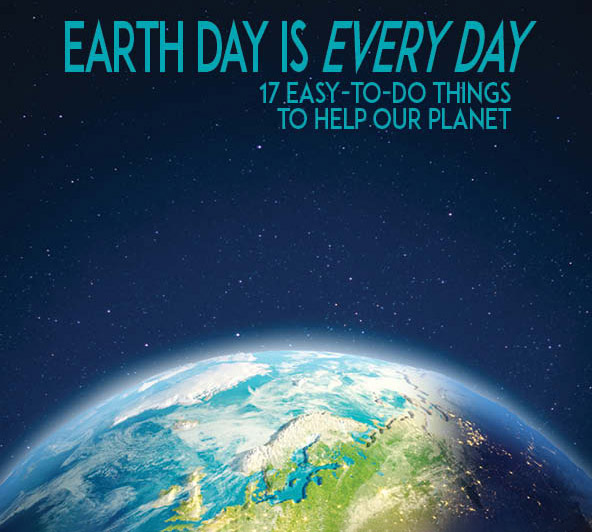By Sherri Cortland ND
In 1970, when Earth Day was first started, it seemed like a radical idea; and while many of us hoped it would be the beginning of a paradigm change where we would all start working together for the health of our beloved planet, it really hasn’t worked out that way.
In April 2014, I wrote a column for this magazine with the same title like this one, and I asked the question, “Are you doing everything we can to help our planet?” That was eight years ago, and with Earth Day 2022 upon us, I will ask the question again:
Are we doing everything we can to help our planet? I believe that as individuals, and especially as Lightworkers, we can do more.
Looking after the health and well-being of our planet isn’t something to think about one day of the year. It’s something that we must attune and accustom ourselves to doing every day so that we can make a difference and help save our planet. There is more we can do to help our planet than separate out the plastic in our garbage.
From an evolutionary, raising the vibrational level of our planet point of view, we can help our planet by becoming more aware of what we’re personally putting into the atmosphere. Watching our thoughts, words, and actions while focusing on the here and now will help us spew out less negative energy. Creating a mindset and intention to circulate positive energy is a great thing to do for our own spiritual growth and for the evolution of planet Earth.
Another mindset and intention worth creating is to do at least one nice thing for our planet every single day. Small things add up; for example–over the last few years, I’ve made several adjustments in the products I purchase based on the amount of and type of packaging they come in. I switched to my favorite orange juice brand because it only comes in plastic bottles.
The same with my little vegetarian frozen dinner entrees–If they come in plastic, I don’t buy them anymore.
You get the idea. Did it hurt giving up food and drink that I really like? Not when weighed against helping the planet by reducing my daily footprint.
Another thing that we can all do reduce the formation of plastic islands is to bring our own cloth bags into every store where we’re shopping, not just the grocery store.
Here are some recycling and additional tips that I recently found online at https://believe.earth.
- Earth and through other sources that might help us all do a little more for our planet a little bit at a time, and on a daily basis…To avoid wasting water, wash your recyclables with the water you use to wash the dishes or use already-used napkins or paper towels to wipe out the items before putting them in the recycle bin.
- If you can compost, do it. Compostable waste makes up 50% of all solid waste, fills up landfills, and produces methane gas.
- Stop crumpling up paper. The more intact paper is, the more money it’s worth because the cellulose fibers are stronger, increasing the number of times it can be recycled.
- Don’t put paper that can’t be recycled in your bin, i.e.; plasticized paper, credit card receipts, supermarket receipts, carbon paper, pizza boxes, and used paper napkins and paper towels.
- Eat more plant-based “meat.” In Michelle Crouch’s article, “Serving up the Sizzle on Plant-Based Meat,” she notes that while many meatless manufacturers don’t disclose their total emissions, research indicates that they generate a lot fewer greenhouse gases compared to their meat equivalents. Crouch writes that “One study found that Beyond Burger uses 99% less water, 93% less land, and nearly 50% less energy than making a quarter-pound of beef does.
- Before you throw your paper into the bin, take a look and see if you can use the backs for scrap paper; maybe even make little scrap paper pads for yourself.
- Clear glass is easier to recycle than colored glass. Avoid colored glass and long neck bottles whenever possible—the processes to recycle them are complex and expensive.
- Cans are recyclable and much better than bottles when it comes to recycling. Try to leave the little tabs on the cans. I’ve just finished talking my husband into buying drinks in cans instead of plastic bottles. He liked the bottles because he could re-cap them and finish the drink at another time. How did I win this argument? I found lids for cans that maintain the fizz in the fridge overnight.
- Toothpaste containers: Squeeze out every last drop and then recycle the tube. They are made from a type of plastic.
- Let’s talk about Styrofoam: Styrofoam, like the kind that comes packed around electronics, is recyclable. It has monetary value, and the process for recycling it is affordable. Those polystyrene trays that meat, fish, and vegetables come wrapped in have a low monetary value and are expensive to recycle.
- Use a mug or glass instead of Styrofoam cups.
- Reuse gift bags and wrapping paper.
- Shop at Garage and Yard sales & have Garage and Yard sales of your own—save and make money while saving space in our landfills.
- If you must buy bottled water, buy a brand that uses recycled plastic for its bottles. Even better is to use a permanent water bottle.
- Use cotton swabs with a paperboard spindle—avoid the ones made of plastic.
According to www.50waystohelp.com, If 10% of households switched to a paperboard spindle, the petroleum energy saved would be equivalent to over 150,000 gallons of gasoline. - Try the new plant-based meat replacement foods that are out there.
- The more plant-based products we eat, the more we’re helping the planet.
- Recycle your old cell phones. They will sit in the dump for years as their batteries exude toxic substances. There are lots of great organizations looking for cell phones—do a quick search online and see what turns up.
- Shop in your closet. My friend’s Mom, who lives in Germany, shared that in Germany, many make it a point to wear what they already own rather than frequently buying new clothes. A little research turned this up www.planetaid.org: “When clothes end up in landfills, they create greenhouse gases, so recycling them…helps diminish the forces that contribute to climate change. Reusing the fabric in old clothes means [using] fewer resources, both monetary and environmental, [that] are wasted in growing fiber for new ones.”
The important thing is to get started. Start by incorporating what you can from the above list; Take a look at how you currently do things, see how you can make small improvements, and share ways to help our planet become healthy again with your friends and family. The more we each do, the better off our planet will be—for our children and grandchildren and for us.







